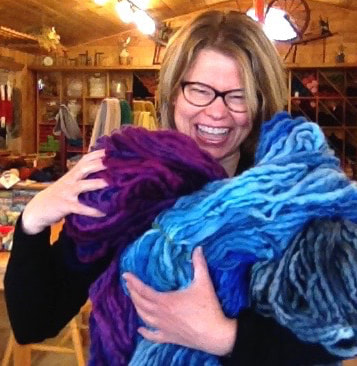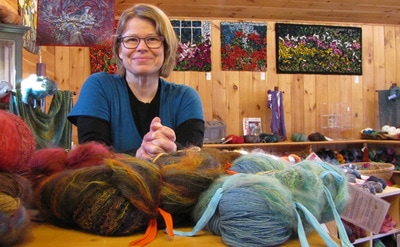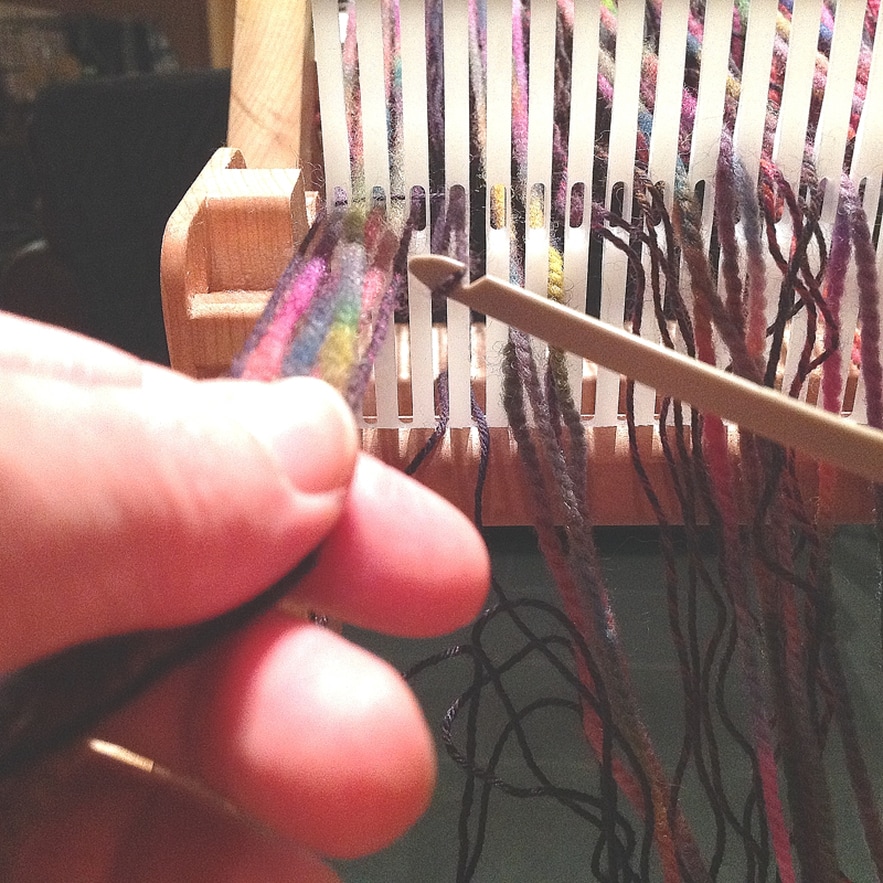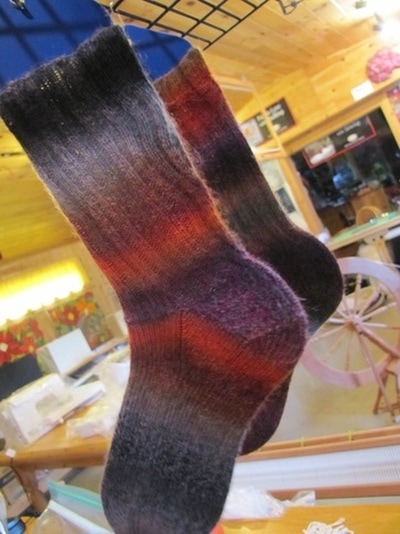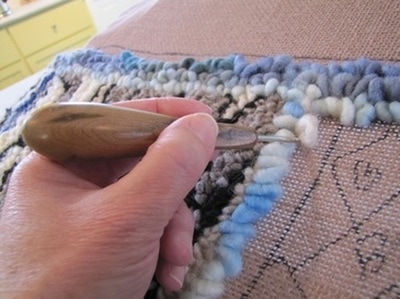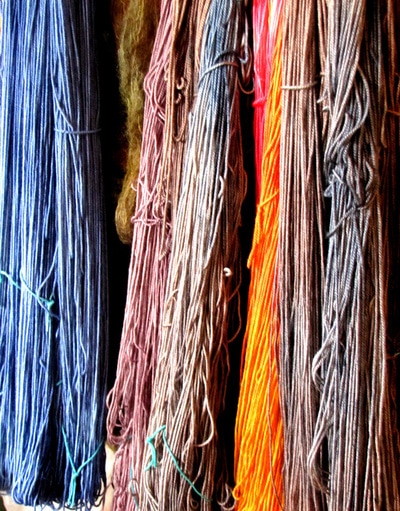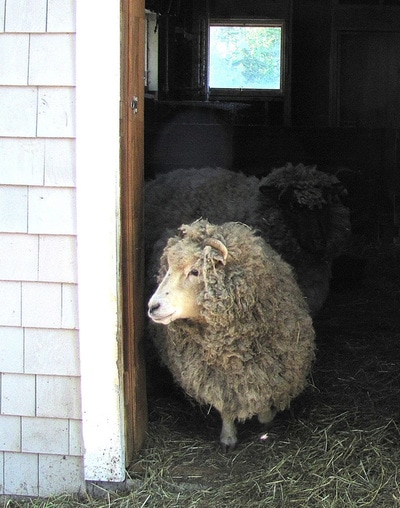|
We continue to received a wealth of really great questions regarding Ashford Rigid Heddle and Knitters looms. Today's post highlights a number of FAQ's regarding the purchase of a new loom.
My personal answers are attached. They reflect my own experience as a Rigid Heddle mega-fan and an Ashford retailer over the past 20 years. The opinions of others may vary. Where do I start in choosing a loom size? In terms of choosing a loom width, the smallest looms 10"-12” are perfect for scarves, small accessories and sampling, 16” will also provide enough width for tableware. A 20” loom is wide enough for most shawls, 24” provides the cloth width required for most sewing patterns 32” will, of course do all of this as well as small blankets and floor mats. Rigid or folding (knitters loom)? In my opinion the rigid looms are a little sturdier. The folding looms are excellent and super-portable but of course there is a (small) compromise in that they have a little give or movement as you work. This does not affect your weaving project and doesn’t bother me at all when I use these looms though I think perhaps weavers who have lots of experience on large looms may find this a little distracting. In terms of space requirement the rigid looms will store under a bed or hanging on bicycle hooks although they are not quite as space efficient as knitters looms. All of the stands (for rigid and folding looms) can be taken apart simply by turning a set of knobs. They do not require a tool set after the initial assembly. Trying to decide between a 28” knitters loom and a 32” rigid heddle loom The only difference between these two is their size and folding capability. In terms of function they are equal. The stand set-up for the rigid Heddle vs Knitters loom is more substantial but not as travel friendly. Is a 32” rigid heddle too large for me? Our most popular sizes sold are the 20-24” models as both lend a good width for shawls. If you are feeling uncomfortable about not having the extra length, the 32” is not significantly more expensive. In terms of working on a 32” it is as simple to operate as the smaller models. The only thing that I would mention to you is that the 32” rigid heddle is a bit too large to work on without a frame. The idea is that smaller looms, say 16” or less can be worked against a table supported in your lap. At 20” some people prefer to use a stand and others weave without one. I would definitely suggest that looms 24” and up require a stand. Which additional reeds do you recommend? The heddle that comes with all Ashford rigid heddle and knitters looms is a 7.5 dpi, suitable for a standard worsted weight yarn (such as Briggs and Little). For lace weight shawls you may want a 15dpi heddle. A common cloth weight for dish towels etc used are 10 and 12.5 dpi heddles (sett with either a single or double strand). A super-bulky textured scarf will use a 5dpi heddle. What is a vari-dent reed? A vari-dent reed offers the ability to accommodate different sized yarns in small segments across the width of your reed. This allows you to dress the loom with a custom warp, meaning endless possibilities for cloth of your own design! Would a Rigid heddle loom make a good gift for my daughter? I absolutely love rigid heddle looms. I use them in the shop and have one at home as well. I think it’s a fantastic gift for anyone who like to work with fibre!
45 Comments
Attention please. My inner voice tells me I could use some.
Because aren't we all a little overrun by distraction? There are fires to put out I seem to have a steady run of fires to put out which doesn't exactly coddle my creativity. Maybe I need to step back and get a better perspective. Maybe the fires are actually just little puffs of smoke. My mother always tells me, just think of Scarlett O'Hara, "tomorrow is another day". Perspective. Then there's the computer I'm trying to manage my time more effectively, picking and choosing only the inter-places that I love. The best time of day My rug hooking friend Val says that she gets her best creative work done in the morning. Good point. We all have our sweet spot during the day and mine will be reserved for creative thoughts and endeavours rather than passive time-spending. I might have to snap an elastic around my wrist as a reminder for this one but nevertheless I'm committed. Taking time Note to self. I should also remember that not everything needs to be accomplished at warp speed. The thing that I like most about eating a grapefruit is that it takes time. I take great pains peeling away to the fruit so that I can fully enjoy it's colour, texture, scent and taste. I need more grapefruit in my life. Today I'm wondering, do you finish all of the projects that you've started?
How do you deal with projects that you've put aside for a long period of time? How do you tackle your wool room, stash, and long-lost projects? In the group "You Can Do it" (Rug Hooking Daily) one of our members posted a goal to "muck out" of my wool room....deciding which projects to complete and which to let go! There are so many! Pretty brave really, committing to cut ties with some of the rugs that she no longer feels passionate about. The conversation pertains to projects that have been put by the wayside but really it speaks about so much more. Not only are those WIPs taking up space on your shelf, they may be taking up valuable (and creative) mind space as well. Do you find yourself going through that mental "unfinished" checklist from time to time? Do your works in progress make you feel energized or overwhelmed? Here are three things that I've found useful in keeping my space creative. 1. Make a list. The first time that I actually listed all of my personal WIPs I was more than a little surprised. (Bonus: in order to do so I had to unearth them which added the benefit of an overall tidy-up and re-grouping) I was left with the THE LIST from which I was able to decide which projects I was willing to let go. 2. Reclaim and repurpose. Not wanting to part with carefully selected and much loved materials I'm happy to take the time to dismantle a project. Natural fibres will bounce back to their original splendour after a delicate wash. I will always choose to repurpose materials to further a project that I'm passionate about rather than have them locked-up in a project that no longer holds my interest. 3. Keep it to a dull roar. I don't know about you but when I'm super jazzed about a project it shouts at me for attention! Having too many open ended projects doesn't work for me because some of them simply won't be heard. I have a sweet spot in terms of the number of projects that I can successfully work on at any given time and I try to stay within this framework. |
WELCOME
Everyday I try to find a little something that makes life interesting. A good book, a wagging dog, a cool breeze, tea with a friend. Here are my field notes about making, discovering, and enjoying a simple, slow, handmade life. Thanks so much for visiting. I appreciate your spending time with me. xo Heidi 
STITCHER, MAKER, DREAMER, BOOK REVIEWS summer 2016 Archives
July 2020
|




